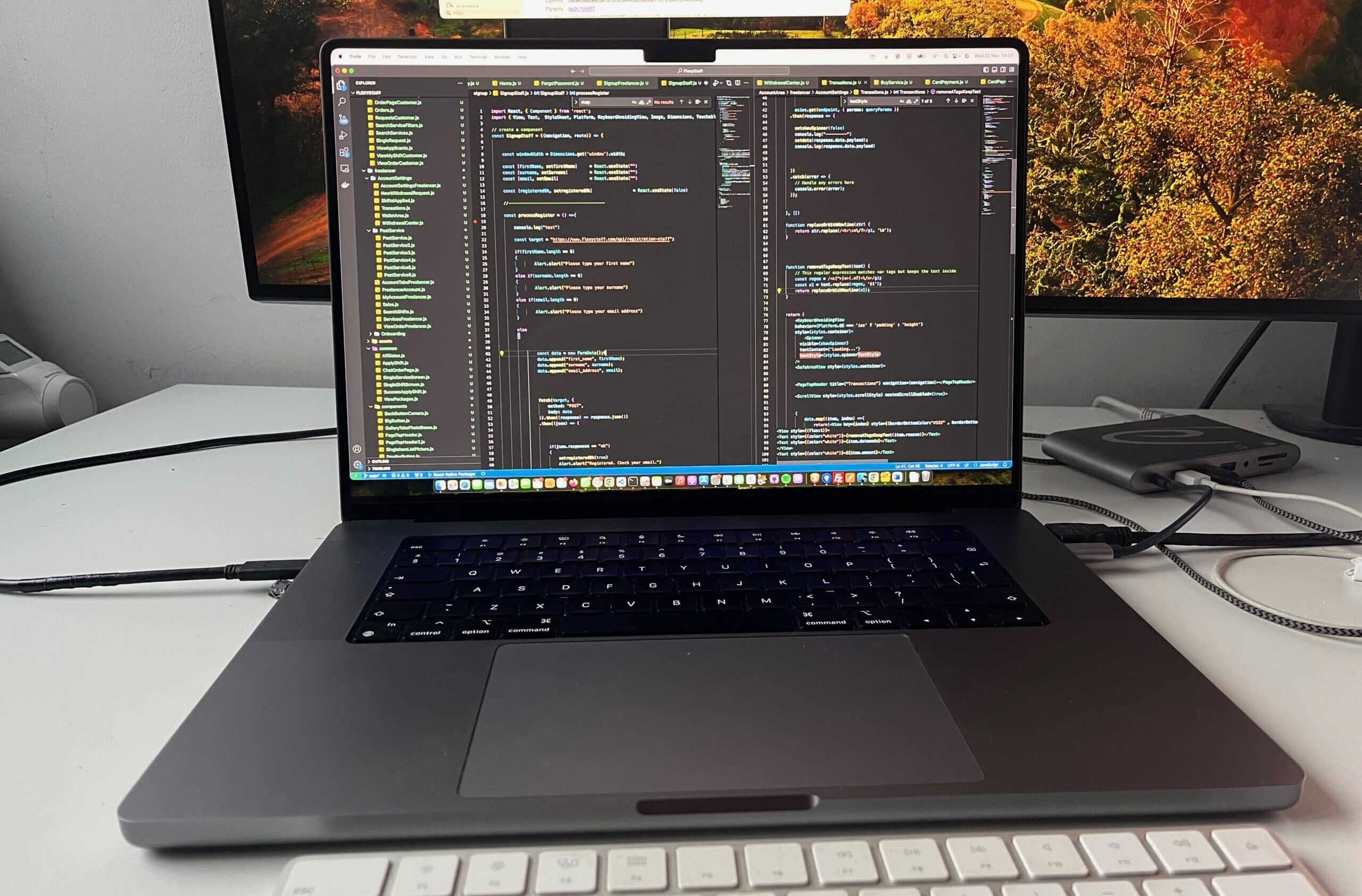
What to Identify Before Developing a Mobile App
Decide on Your Operating System
Choosing the right operating system is a critical first step in mobile app development. Begin by evaluating the market share and user demographics of iOS and Android platforms. iOS users, often seen as high-value customers, may bring more in-app revenue. Conversely, Android dominates global market share, offering a wider user base. Consider your app’s purpose and revenue model. For instance, subscription models fare well on iOS. Meanwhile, Android is ideal for ad-supported apps. Additionally, assess the development environment. iOS’s Xcode provides a robust, user-friendly interface. On the other hand, Android’s flexibility with Google’s Android Studio caters to a diverse range of devices.
Furthermore, think about the release cycle and update frequency. iOS apps often have a smoother approval process, leading to quicker updates. Android’s open ecosystem, however, presents more variability in user device capabilities. This choice impacts not just your immediate development strategy, but also long-term maintenance and scalability. Hence, aligning the operating system choice with your business goals and user needs is crucial for the app’s success.
Know Your Target Audience
Understanding your target audience is paramount in designing an effective mobile app. Start by conducting thorough market research. Identify the age, location, and interests of your potential users. This information shapes every aspect of development, from the app’s design to its functionalities. For example, younger audiences might prefer a vibrant and interactive interface, while professionals could favor a more straightforward, productivity-oriented design. Additionally, consider the cultural aspects. Localization goes beyond mere translation, encompassing cultural nuances and usage habits.
Moreover, engage with your audience early on. Utilize surveys, focus groups, or social media to gather insights. Pay attention to their pain points and preferences. This approach not only tailors your app to meet user expectations but also fosters user loyalty. Remember, an app that resonates with its users stands a higher chance of success. Therefore, invest time in knowing your audience intimately. This investment significantly influences your app’s design, functionality, and overall user experience, paving the way for a more engaged and satisfied user base.
How to Develop an App in 10 Steps
Establish a Development Team
Assembling the right development team is the cornerstone of successful app creation. Start by identifying the key roles: mobile developers, UI/UX designers, QA testers, and a project manager. Each member brings unique skills and perspectives. Ensure your team has a blend of technical proficiency and creative thinking. Additionally, effective communication within the team accelerates problem-solving and innovation. Remember, a diverse and collaborative team is more likely to produce an app that stands out in the competitive market. App development teams may even include additional members.
Moreover, consider the team’s structure. Small teams are agile and can adapt quickly, while larger teams offer a wider range of expertise. Balance is key. Select team members who are not only skilled but also passionate about your app’s vision. This passion fuels motivation and drives excellence in app development.

Conduct Competitive Research
Competitive research is crucial to carve out a niche in the app market. Begin by analyzing your competitors’ strengths and weaknesses. Look at their user reviews, feature set, design, and marketing strategies. This research reveals gaps in the market that your app could fill. Also, note the successful elements in competing apps; these can inspire features or strategies for your own app.
Importantly, don’t limit your research to direct competitors. Explore apps in related fields for additional insights and inspiration. This comprehensive approach helps in creating an app that not only meets but exceeds user expectations.
Outline Core Features
Defining the core features is a pivotal step in app development. Focus on what sets your app apart – its Unique Selling Proposition (USP). Prioritize features that directly address user needs and contribute to the app’s primary goal. Avoid overloading the app with unnecessary features; this can complicate the user experience.
Create a feature roadmap. Start with essential features for your Minimum Viable Product (MVP) and plan for additional features in future updates. This strategy keeps the initial development focused and allows for iterative improvements based on user feedback.
Create Mockups
Mockups transform your app idea into a tangible visual design. They provide a preliminary look at your app’s layout and functionality. Start with basic wireframes to outline the app’s structure. Then, evolve these into detailed mockups. Use tools like Sketch or Adobe XD for high-fidelity mockups that closely resemble the final product.
Remember, mockups are not just about aesthetics. They are a tool for communication and collaboration. Share them with your team, stakeholders, and potential users for feedback. This iterative process ensures the final design is both attractive and functional.
Plan Great App Security
App security is non-negotiable in today’s digital landscape. Begin by understanding the common security threats, such as data breaches and unauthorized access. Implement robust encryption for data storage and transmission. Also, consider user authentication methods like biometrics or two-factor authentication.
Moreover, plan for regular security audits and updates. Stay abreast of the latest security trends and threats. A secure app not only protects users but also builds trust and credibility in the market.
Begin Coding
Coding is where your app starts to come to life. Choose the right programming language and framework based on your platform and app requirements. For Android, this might be Java or Kotlin; for iOS, Swift or Objective-C. Adopt a structured approach to coding. Use version control systems like Git to manage changes and collaborate effectively.
Furthermore, follow coding best practices. Write clean, readable, and modular code. This practice facilitates maintenance and future updates. Regularly review and refactor your code to improve performance and scalability.
Perform Multiple Tests
Testing is essential to ensure a high-quality app. Start with unit tests to check individual components. Then, conduct integration tests to ensure these components work together seamlessly. Don’t forget usability testing to gauge the user experience.
Also, consider different testing environments. Test on various devices, screen sizes, and operating systems. This comprehensive testing approach helps in identifying and fixing issues before the app goes live, ensuring a smooth user experience.
Gather and Implement User Feedback
User feedback is invaluable for app improvement. After the initial release or during beta testing, gather user opinions. Use surveys, feedback forms, and app analytics to understand user behavior and preferences.
Importantly, act on this feedback. Prioritize changes that enhance user experience. This responsive approach not only improves your app but also shows users that their input is valued, fostering loyalty and engagement.
Launch in the App Store or Google Play
The app store launch is a crucial milestone. Prepare a compelling app description, screenshots, and a promotional video. These elements should highlight your app’s key features and benefits.
Also, navigate the app store’s guidelines to ensure a smooth approval process. Plan for a launch date and consider a marketing strategy to boost visibility upon release. A successful launch sets the tone for your app’s journey in the competitive market.
FAQs for Mobile App Development
Cost Considerations
Understanding the cost involved in mobile app development is crucial for effective budgeting. The cost varies widely based on factors such as app complexity, platform choice (iOS, Android, or both), and the geographic location of your development team. Simple apps can cost a few thousand dollars, while more complex applications can run into hundreds of thousands. Don’t forget to factor in ongoing costs like server fees, maintenance, and updates. To manage costs effectively, prioritize features and consider starting with a Minimum Viable Product (MVP). This approach allows you to test the market with a basic version of your app and invest more as it gains traction.
Moreover, explore different funding options if necessary, such as bootstrapping, seeking investors, or crowdfunding. Transparency about costs from the outset helps in aligning your budget with your app development goals.
Development Timeline
The timeline for developing a mobile app depends on various factors, including the complexity of the app, the proficiency of your development team, and the feedback and iteration cycle. Typically, a simple app can take about 3-4 months to develop, while more complex apps may take 6-12 months or longer. It’s important to set realistic timeframes and account for stages such as planning, design, development, testing, and deployment. Rushing through these stages can compromise the quality of your app.
Additionally, be prepared for unexpected delays, which are common in software development. Regular communication with your development team and stakeholders helps in managing expectations and adjusting timelines as needed.

Post-Launch Updates
Post-launch updates are vital for keeping your app relevant and functional. Plan for regular updates to fix bugs, improve performance, and add new features. User feedback is a valuable source for identifying areas of improvement. Additionally, staying updated with the latest technology trends and operating system updates is crucial for maintaining compatibility and security.
Establish a schedule for periodic reviews and updates. This proactive approach not only enhances the user experience but also helps in retaining users and attracting new ones.
Payment Integrations
Incorporating payment integrations is key for apps that involve transactions. Choose a reliable and secure payment gateway that supports multiple payment methods like credit cards, digital wallets, and bank transfers. User convenience should be a top priority, so ensure the payment process is simple and intuitive.
Also, be mindful of security and privacy laws. Comply with standards like PCI DSS to protect user data. Clear communication about payment processes and security measures builds user trust and credibility for your app.
Reap the Rewards of Mobile App Development
Developing a mobile app can be a rewarding venture, both financially and in terms of user impact. Successful apps solve real problems or provide valuable entertainment, leading to high user engagement and retention. Monetization strategies like in-app purchases, subscriptions, or advertising can generate significant revenue. Moreover, a well-developed app enhances brand visibility and customer loyalty, providing a direct channel to engage with users.
Additionally, the data collected through your app offers insights into user behavior and preferences, guiding business strategies and product development. The key to reaping these rewards is a user-centric approach, continuous improvement, and adapting to market trends. With the right strategy and execution, your app can achieve sustainable success in the dynamic app marketplace.
FAQs for Mobile App Development
How much does it cost to create a mobile app?
The expense involved in developing a mobile app varies, influenced by factors such as team size, utilized resources, and general development costs. Typically, outsourcing the development tends to be more costly than handling it internally.
How long does it take to create a mobile app?
Developing a small-scale mobile app usually takes between one to two months. However, the time frame extends for larger and more complex apps, which can require anywhere from three to six months to develop.
Can you make changes to a mobile app after its launch?
Indeed, it’s possible to update a mobile app after its launch. These updates are essential for fixing any minor software bugs and enhancing outdated functionalities, keeping the app current and efficient.
Can you receive payments through a mobile app?
Yes, mobile apps can facilitate payment transactions, allowing in-app purchases. If your app is already built, integrating payment functionality can significantly enhance its capabilities and user experience.
Do you need an app development company ? Do not worry and get in touch with us for simple apps or even enterprise grade type of apps and portals.








